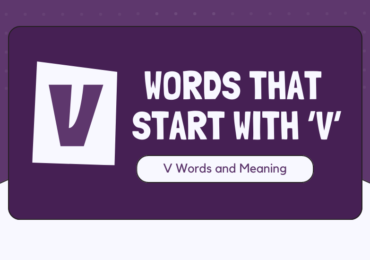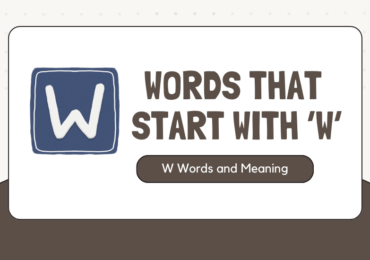A preposition is a word or group of words used before a noun, pronoun, or noun phrase to show direction, time, place, location, spatial relationships, or to introduce an object.
రెండు Nouns మధ్య గాని, రెండు Pronouns మధ్య గాని లేదా Noun కీ - Pronoun కి మధ్య గాని సంబంధాన్ని చూపించే బాషా భాగాలను ప్రిపోజిషన్స్ అంటారు. ఉదాహరణకు Abook is on the table (పుస్తకం టేబుల్ మీద ఉంది) అనే వాక్యంలో ON అనే మాట Book మరియు టేబుల్ మధ్య సంబంధాన్ని తెలుపుతుంది.
బుక్, టేబుల్ పై ఉండటమే ఆ సంబంధం. అదే వాక్యంలో On మాటను తీసి (Abook is the table) ఆ వాక్యం రాస్తే. అది అర్ధరహితంగా ఉంటుంది. పై వాక్యంలో Book & Table రెండూ కూడా నామవాచకాలు. మన డెఫినేషన్ ప్రకారం రెండు Nouns మధ్య సంబంధం తెలిపే మాటలను ప్రిపోజిషన్స్ అంటారు. ఈ వాక్యంలో On అనేది ప్రిపోజిషన్ అవుతుంది.
Examples
| He (Pronoun) ran around (Preposition) the corner |
| Geetha (Noun) wrote the paper with (Preposition) Pen |
| The ball (Noun) is on (Preposition) the box |
| That (Pronoun) happened during (Preposition) the 1900s |
విభక్తి ప్రత్యయములుగా చెప్పుకునే ఈ మాటలు తెలుగులో చాలా తక్కువ. కానీ ఇంగ్లీషులో ప్రిపోజిషన్స్ పెద్ద సంఖ్యలో ఉన్నాయి. అలానే ప్రిపోజిషన్స్ ఉపయోగించడంలో కొంచెం ఇబ్బంది ఉంది. కొత్తగా బాష నేర్చుకునే వారుకి వీటిని ఎక్కడ ఎలా వాడాలో చెప్పే నియమాలేవీ లేవు. అంత ఆ బాషా సాంప్రదాయంమీదే ఆధారపడి ఉంటుంది.
ఉదాహరణకు తెలుగులో అనే పొద్దున్న అనే మాటను, ఇంగ్లీషులో 'in the morning" అంటారు. ఇక్కడ In అనేది ప్రిపోజిషన్. అదే రాత్రిపూట అనే మాటను ఇంగ్లీషులో "in the night" అనకూడదు. ఈ సంధర్భంలో At night అనేది వాడుక భాషలో సరైన వాక్యం. ఇక్కడ At అనేది ప్రిపోజిషన్ అవుతుంది.
ఉదాహరణ తీసుకుంటే కర్రతో అనడానికి "with stick" అనొచ్చు కానీ, జ్వరంతో అనాలంటే "with fever" కాదు. "from fever" అనాలి. ఇలానే అనాలని రూల్ ఏంలేదు కానీ, అదో సాంప్రదాయం. ఈ సాంప్రదాయంను ఈడియమ్స్ (Idiom) అంటారు. ఏ సంధర్భంలో ఏ ప్రిపోజిషన్ రావాలీ అనేది ఎక్కువగా ఇడియమ్స్ బట్టే ఉంటుంది.
ఇంగ్లీష్ కొత్తగా నేర్చుకునే విద్యార్థులు వీటిని సరిగ్గా ఉపయోగించడం అనేది ప్రధానంగా రెండు విషయాల మీద ఆధారపడి ఉంటుంది. క్రియల్ని సరిగా వాడడం మీద, రరెండవది ప్రిపోజిషన్ సరిగా వాడడం మీదా. మొదటిది ఎంత ముఖ్యమో, రెండవది కూడా అంత ముఖ్యం.
Prepositions of Time
| About | After | Ago | In |
| Around | At | Gone | On |
| Before | Past | Since | Up until |
| From | By | Prior to | Up to |
| During | For | Following | Until/till |
Prepositions of place
| Behind | Between | Beside | Beneath |
| Below | Together | Throughout | Beyond/towards |
| Near to | Through | Opposite | Toward |
| Next to | Above & Across | Forward | Underneath |
| In front of | Within | Without | Against |
Prepositions of Movement
| Above | Across | Ahead | Along |
| Away from | Through | Further to | Away |
| Round | By means of | Into | In between |
| Over | Under | Out of | Toward/towards |
| Amid | Under | Via | Up |
Prepositions of Manner and Phrase
| About | According to | Thanks to | With reference to |
| As per / As for | Depending on | Due to | With regard to |
| As well as | Except for | Because of | Considering |
| Aside from | Owing to | In addition to | Regardless of |
| Bar | Other tha | In spite of | In case of |
| Barring | Concerning | In light of | In face of |
| Besides | Contrary to | Despite | In favor of |
| But for | Counting | Except | Than |
| By | Cum | Excluding | In view of |
| But | Versus | Unlike | On behalf of |









